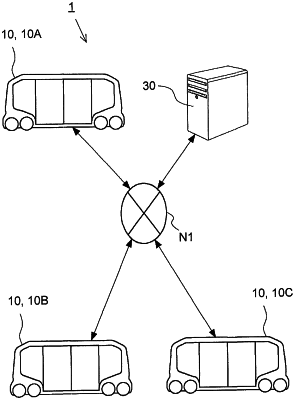| CPC G06Q 10/0832 (2013.01) [G06Q 10/0833 (2013.01); G06Q 10/08355 (2013.01)] | 3 Claims |

|
1. An information processing device comprising a control unit that executes:
identifying a first region where a predetermined module is insufficient in number, the predetermined module being a module that is attachable to and detachable from a movable object;
identifying a second region where the predetermined module is superfluous in number, wherein such identifying the second region where the predetermined module is superfluous in number comprises determining if a predetermined module in a candidate second region is in a working state, and, when the predetermined module in the candidate second region is in a working state, determining that the predetermined module is not superfluous in number in the candidate second region;
instructing a movable object equipped with the predetermined module in the second region to provide the superfluous predetermined module to a predetermined movable object;
instructing the predetermined movable object to cause the predetermined module to be attached in the second region and transport the predetermined module to the first region according to a route that is automatically generated based on map data and point-of-interest information stored in a database, and wherein the predetermined movable object uses an environmental information sensor to detect obstacles in a periphery of the predetermined movable object and transports the predetermined module to the first region autonomously along the automatically-generated route such that no obstacle enters a predetermined safety area around the predetermined movable object while the predetermined movable object is travelling from the second region to the first region; and
instructing a movable object not equipped with the predetermined module in the first region to receive the predetermined module transported to the first region by the predetermined movable object,
wherein the control unit identifies the first region based on data acquired by a sensor that detects a surrounding environment, the sensor being included in the movable object and wherein the control unit identifies the second region based on a working state of the predetermined module.
|